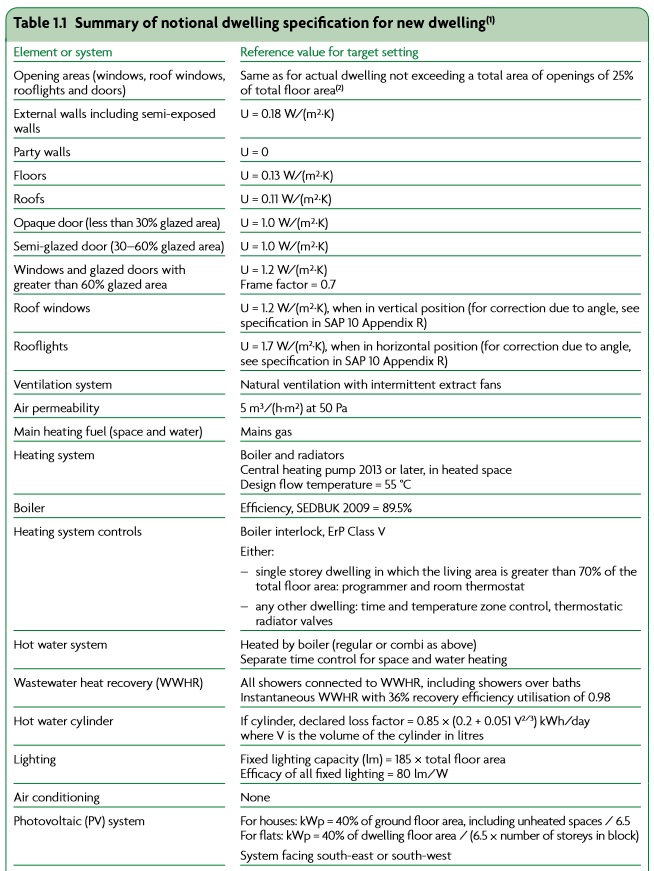2021 Update to Part L Building Regulations – Volume 1: Dwellings
The 2021 edition of the Part L Building Regulations is due to take effect from 15th June 2022.
Approved Document L covers the requirements for the conservation of fuel and power in both dwellings and buildings other than dwellings, this is split into two separate volumes and we have linked to the official versions of the Updated Approved Documents on the Government website below:
- Approved Document L – Conservation of Fuel and Power – Volume 1: Dwellings
- Approved Document L – Conservation of Fuel and Power – Volume 2: Buildings other then Dwellings
Part L (conservation of fuel and power) is being updated and improved to meet the Governments Future Homes Standard.
This means that through enhanced building design, energy efficient HVAC services, and renewable technologies, any new dwellings or commercial buildings should be a nearly zero energy building and be zero carbon ready.
Part L Volume 1: Dwellings
This post is going to cover Part L Volume 1:Dwellings of the new Building Regulations, for guidance of Part L Volume 2: Buildings Other than Dwellings you can click here.
Key Changes Under the New 2021 Edition Part L Volume 1:Dwellings
Here we wanted to highlight some key differences between the current 2013 Part L1A Approved Document and the new 2021 edition Part L Volume 1 Approved Document.
Improved CO2 Emission Reduction Targets
Perhaps the most significant change in the Part L Approved Document is the reduction in CO2 emissions required in new homes.
Under the new regulations new homes will be required to produce approximately 30% lower CO2 emissions than under the current standards.
Target Primary Energy Rate
Under the old Part L Approved Document Dwellings needed to improve upon both the Target Carbon Emission Rate (TER) and Target Fabric Energy Efficiency (TFEE) in order to satisfy Part L.
Now under the latest approved document another target has been added that must be complied with, this is called the Target Primary Energy Rate (TPER).
The Target Primary Energy Rate is the maximum primary energy use that will be allowed for in a dwelling or building in a year in order to satisfy Part L, it is expressed as kWhPE/(m2.year).
Primary energy is energy either from renewable or non-renewable sources, that has not undergone any conversion process.
In simple terms Primary Energy will also take into account upstream processes used to produce that energy, for example natural gas will also account for any energy used in its extraction and transportation to site.
Enhanced Fabric U-Values and Insulation
To produce buildings that emit around 30% less CO2, significant improvements in the construction fabric U-Values are required.
The table below shows a comparison of the current Part L1A 2013 limiting U-Values and the new limiting U-Values required under Part L 2021 Volume 1:Dwellings.
| Construction | Part L 2013 Limiting U-Values (W/m2.K) |
New Part L 2021 Limiting U-Values (W/m2.K) |
|---|---|---|
| Roof | 0.20 | 0.16 |
| Wall | 0.30 | 0.26 |
| Floor | 0.25 | 0.18 |
| Party Wall | 0.20 | 0.20 |
| Windows | 2.00 | 1.60 |
| Roof Lights | 2.00 | 2.20 |
| Doors | 2.00 | 1.60 |
It can be seen that there is a significant improvement required across the majority of construction elements.
It is also worth mentioning that these are only the limiting values which a construction should be no worse than, not what your proposed dwelling will be compared against in terms of fabric, energy, and carbon efficiency.
Your proposed dwelling will be compared against a notional dwelling with a set specification, the table below shows the U-Values and services used by the Notional Building under the Part L 2021 Regulations.
So in order to achieve a pass on your Part L SAP Calculation you new house should really aim to achieve U-Values equal to or better than the notional U-Values below.

Air Permeability and Air Testing Requirements
As well as an improvement to the construction U-Values the air permeability of a dwelling under the latest Part L 2021 Building Regulations is also being enhanced.
Under the old Part L 2013 regulations a dwelling could avoid the need for an air test if an air permeability figure of 15 m3/(h.m2) at 50Pa was assumed, if tested for its air permeability then it needed to achieve a limiting value of at no worse than 10 m3/(h.m2) at 50Pa.
Under the new regulation 2021 Part L guidance all dwellings must now be tested for their air permeability and need to achieve a value of no worse than 8 m3/(h.m2) at 50Pa (or they can achieve a value of 1.57 m3/(h.m2) at 4Pa under the new Pulse Test).
Although a value no worse than 8 m3/(h.m2) at 50Pa is required, if you look at the notional specification you can see that it uses a value of 5 m3/(h.m2) at 50Pa.
Therefore to ensure that your proposed dwelling achieve a pass under the SAP calculation you should really be targeting air permeability values better than this.
However, it is worth mentioning that in accordance with the new Part F 2021 Building Regulations only buildings with an air permeability of higher than 3m3/(h.m2) at 50Pa can use a natural ventilation and intermittent extract fan ventilation design.
If your dwelling achieves better than this then you will need to install a continuous mechanical extract system or a whole house mechanical ventilation heat recovery system.
This could lead to a scenario where a naturally ventilated dwelling is made to be less air tight on completion in order to comply with the Part F Regulations.
This may seem counter-intuitive and will cause an increase in energy consumption, however it will ensure that the building is properly ventilated and avoid other issues such as condensation.
Change in Fuel Carbon Factors
This is probably the change that will cause the biggest impact on the type of heating systems installed within new dwellings.
This is because the fuel carbon factor for electricity is being significantly reduced thanks to the amount of renewable energy now used within the electrical grid.
The fuel factor for electricity is reducing from 0.519 kg CO2 per kWh to 0.136 kg CO2 per kWh, whereas mains gas is going from 0.216 kg CO2 per kWh to only 0.210 kg CO2 per kWh.
This shows that electrical heating systems such as Air Source Heat Pumps or even direct electric heating will become much more favourable to gas boilers in order to reduce carbon emissions and achieve a pass.
However, this also means that installing Solar PV Panels on a dwelling will no longer have such a significant impact on reducing emissions.
Thermal Bridging
Under the new Part L 2021 regulations the Accredited Construction Details (ACD) that are used to produce thermal bridging Psi values are being removed.
ACDs were a set of standardised junction details that a developer could build to in order to achieve a specific Psi value.
If the developer didn’t follow the ACDs and didn’t specifically calculate the junction Psi value then a default value was used.
Under the latest regulations it will be extremely important for developers to either use a construction method that has their junction Psi values already calculated (such as Kingspan’s Tek Building System) or they will need to get their junction Psi values specifically calculated.
This is because, although default Psi value details can still be used under Part L 2021, they will be considerably worse than the notional buildings Psi values and therefore it will be extremely difficult for a dwelling to pass the SAP calculation using only default Psi Values.
Photographic Evidence
Under the Part L 2021 Building Regulations requirements it will also be extremely important to take photographs of each of the dwellings junctions once they are constructed showing continuity of insulation, as well as photographing the installed building services.
These photographs must be clearly labelled, with correct Meta Data showing the time and location of when and where they were taken.
They must be provided to us, the energy assessor on the project, to ensure that what has been allowed for the dwelling at As Designed stage has actually been installed at the As Built stage.
If this evidence is not provided to the energy assessor, or it is of an inadequate quality, then we may have to use default values in some areas such as for thermal bridging Psi Values, that could cause the dwelling to now fail.
In the worst case scenario we would not be able to sign off the SAP calculation as complete, which would mean that Building Control would not be able to sign off the dwelling either without expensive remedial work to get the evidence required.
A list of the photographic evidence now required to be supplied to the energy assessor from the builder/developer can be seen below:

New Overheating Regulations and Electric Vehicle Charging Regulations
Although it doesn’t strictly fall under the new Part L Regulations, we wanted to highlight that all new dwellings (or buildings used for residential purposes such as care homes or student accommodation) will also need to satisfy the new Part O Overheating Regulations, which we have already written more about here.
All new dwellings will also need to install an electric car charging point to comply with the new Part S Building Regulations.
Summary
These are the main changes we wanted to discuss between the old 2013 Part L Regulations and the latest 2021 version.
With these changes we will undoubtedly see a lot more electric only homes being produced heated by either an air source heat pump or direct electric heaters.
There is also much stricter requirements as to the evidence required for energy assessments.
Developers and builders will need to be very aware of the photographic evidence required at each stage. This should also be clearly labelled and sent to the energy assessor as soon as possible to verify the design.
With a 30% carbon reduction required over the old regulations this is the next stepping stone on the road to a Future Homes Standard and Net Zero Carbon.
The new Part L Regulations take effect from 15th June 2022 so any development applying for planning permission after this time will be required to meet the latest guidance.
If you require a SAP Calculation energy assessment under either the current 2013 Part L Approved Document or the new 2021 Part L Approved Document please contact us using our details below.



